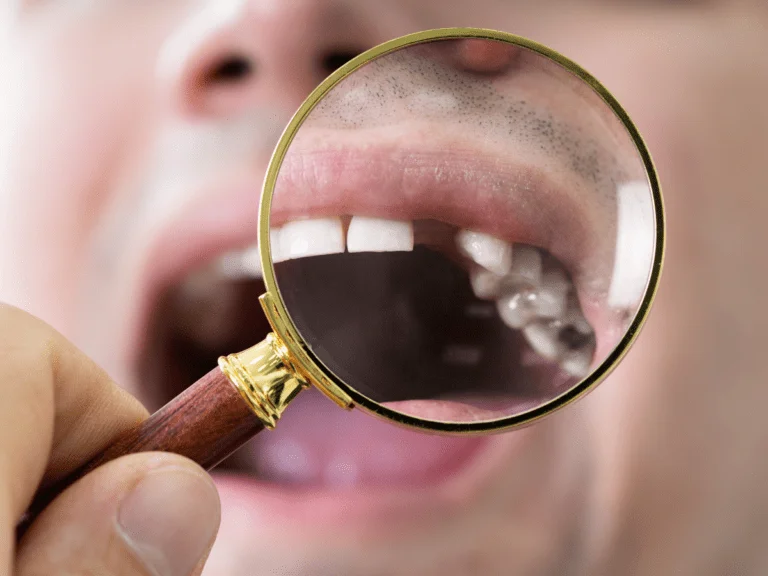Methamphetamine
Methamphetamine is a highly addictive central nervous system (CNS) stimulant drug that is often illegally produced and trafficked. Desoxyn, a U.S. Food and Drug Administration-approved version of this substance, is prescribed to treat attention deficit hyperactivity disorder (ADHD) and obesity.

Common Brand Names: Desoxyn
Methamphetamine works by elevating the level of the neurotransmitter dopamine in the brain. This chemical plays an important role in regulating bodily movements, motivation, the sensation of pleasure, and the reinforcement of rewarding behaviors.
The drug has the capability to quickly release significant levels of dopamine in the areas of the brain associated with reward and pleasure. Repeated release of these high levels of dopamine only serves to reinforce drug-taking behavior, as well as the desire to replicate the experience again and again.
Although methamphetamine has similar physiological and behavioral effects to cocaine, another popular stimulant substance, the latter is rapidly metabolized and removed from the body. Methamphetamine, on the other hand, stays for much longer in the brain and in the body, which means its stimulant effects endure much longer as well.
Indeed, methamphetamine is categorized as a Schedule II substance under the federal drug scheduling system, which means it has a high potential for abuse that can lead to physical and psychological dependence.
What Is Methamphetamine Used For?
As a Desoxyn, a U.S. FDA-approved medication, methamphetamine is indicated for the treatment of the following medical conditions:
- Attention deficit disorder with hyperactivity: Together with other remedial interventions, methamphetamine is used to treat a range of developmentally inappropriate symptoms, including short attention span, distractibility, hyperactivity, and impulsivity, and emotional lability.
- Exogenous obesity: Together with other measures in a weight reduction regimen, methamphetamine is given as a short-term adjunct medication for obesity.
Methamphetamine that is illegally produced or procured is typically used for the pleasurable or desirable sensations it produces, which can include wakefulness, euphoria, sexual arousal, reduced fatigue, reduced inhibition, and sociability.
How Is Methamphetamine Abused?
Methamphetamine comes in different forms, including as pills, powder, and as crystals. The last of these is known as “crystal meth,” and they appear as translucent or transparent “rocks” of various sizes that are white or blue in color.
Meth is usually taken in the following ways:
- Swallowed or consumed through the mouth (orally)
- Inhaled in powder form (snorted)
- Injected into the bloodstream
- Smoked
According to the U.S. Drug Enforcement Administration, users that orally ingest or snort methamphetamine usually experience a long-lasting “high,” one that lasts for as long as half a day. On the other hand, those who smoke and inject the drug experience a short but intense sensation known as a “rush.” Both of these effects are believed to be caused by the release of very high amounts of dopamine in the brain.
Side Effects of Methamphetamine
Methamphetamine use can result in any number of short-term side effects, including the following:
- Increased wakefulness
- Increased physical activity
- Decreased appetite
- Rapid breathing
- Rapid or irregular heartbeat
- Increased blood pressure
- Elevated body temperature (sometimes so high that it leads to convulsions and cardiovascular collapse)
Long-Term Effects of Methamphetamine
Chronic or long-term use of methamphetamine can result in more detrimental effects. These may include:
- Addiction
- Anxiety
- Confusion
- Anorexia and extreme weight loss
- Memory loss
- Sleeping problems
- Severe dental problems (also known as “meth mouth, which characterized by broken teeth and dry mouth)
- Changes in brain structure and function
- Intense itching that can lead to skin sores due to constant scratching
Psychotic symptoms can also develop due to chronic methamphetamine use. These may include:
- Paranoia (e.g. developing unreasonable distrust of other people)
- Aggression or violent behavior
- Extreme changes in mood
- Visual and auditory hallucinations
- Delusions (e.g. the sensation of insects crawling on one’s skin)
- Repetitive motor activity
In many cases, psychotic symptoms can last for months or even years after a person has stopped methamphetamine use. Stress is also known to precipitate spontaneous recurrence of methamphetamine psychosis in individuals who use the drug and have, in the past, experienced psychosis. These and other similar symptoms reflect the tremendous impact that abuse of methamphetamine can have on the brain.
Symptoms of Methamphetamine Overdose
It is very much possible for a person to overdose on methamphetamine. If the individual uses an excessive amount of the drug and experiences a toxic reaction to it, harmful and potentially fatal effects can occur. These may include:
- Stroke
- Heart attack
- Multiple organ failure due to overheating
Seeking immediate help from 911 or from your local emergency medical services is important if you observe the following symptoms of methamphetamine overdose in yourself or in another person:
- Restlessness
- Tremors
- Hyperreflexia
- Rapid respiration
- Confusion
- Assaultiveness
- Hallucinations
- Panic states
- Hyperpyrexia
- Arrhythmias
- Hypertension (high blood pressure)
- Hypotension (low blood pressure)
- Nausea
- Vomiting
- Diarrhea
Signs of Methamphetamine Addiction
Patients who are facing stimulant use disorder may not even realize that they’ve already developed addiction to the substance. To provide a proper diagnosis, medical professionals compare any symptom a patient may be experiencing with the 11 criteria for substance use disorders detailed in the Fifth Edition of the Diagnostic and Statistical Manual of Mental Disorders (DSM-5). For methamphetamine addiction, these include the following:
- Taking methamphetamine in larger doses or for longer than intended
- Inability to stop use of methamphetamine, despite the desire to do so
- Spending a lot of time recovering from use of methamphetamine, or getting and using the substance
- Experiencing constant cravings for methamphetamine
- Inability to fulfill obligations or responsibilities because of methamphetamine use
- Continuing to use methamphetamine despite it causing relationship problems
- Giving up important activities because of methamphetamine use
- Continuing to use methamphetamine even if it puts you in danger
- Continuing to use methamphetamine even if it can worsen existing physical or psychological conditions
- Developing tolerance, which means you need higher and higher doses of methamphetamine to achieve the desired effects
- Developing withdrawal symptoms after suddenly stopping use of methamphetamine
Symptoms of Methamphetamine Withdrawal
Chronic use of methamphetamine can lead to dependence. When use of the drug is suddenly stopped, you could experience a range of stimulant withdrawal symptoms, the most common of which include the following:
- Intense drug cravings
- Feelings of anxiety
- Tiredness or fatigue
- Severe depression
- Psychosis
It is important to remember that developing dependence on methamphetamine, when taken medically, does not necessarily indicate addiction to the drug. It just means that you’ll experience withdrawal symptoms when you suddenly stop using the substance because your body has become used to the presence of the drug. Addiction on the other hand, is a brain disorder that is characterized by a pattern of repeated drug use despite its negative consequences.
To avoid experiencing uncomfortable and dangerous withdrawal symptoms, you need the intervention of a medical detox facility.
What to Expect During Methamphetamine Detox
Experiencing painful and uncomfortable methamphetamine withdrawal symptoms is not something that you should have to go through without proper medical intervention. If such symptoms have manifested because you suddenly stopped using meth, then it’s a sign that you need medically assisted detoxification.
Detoxification from stimulant drugs like methamphetamine is done in a medical detox facility, where medical professionals can ensure your safety and comfort as you go through the detox program. You will be slowly taken off the drug in order to reverse your dependence on the stimulant substance, which is essentially the first step in the care continuum.
You can expect the following when undergoing methamphetamine detox:
- At the start of the program, you may be given IV fluids and nutritional supplements to help restore your health.
- Medications for managing symptoms like insomnia, anxiety, and depression may also be provided by your doctor.
- The doses of methamphetamine that you take will be gradually lessened over a period of several weeks. This is called tapering.
During the course of the detox program, medical professionals will keep track of your progress and provide the medical support and emotional motivation you need to complete the process.
Rehabilitation and Treatment for Methamphetamine Addiction
If you or a loved one is facing methamphetamine addiction, you can seek help from a professional addiction treatment facility to ensure lasting success in your goal of being drug-free.
In the United States, treatment for stimulant use disorders like those caused by methamphetamine drugs usually comes in two setups: inpatient or outpatient treatment. Depending on your individual situation, one setup will be more ideal than the other.
- Inpatient methamphetamine addiction treatment: If you have severe symptoms of substance use disorder or you’ve demonstrated non-compliance to treatment modalities in the past, your doctor may recommend that you undergo inpatient addiction treatment. This is the most intensive treatment option available in which patients are typically asked to stay in a facility where they can be monitored and cared for by medical professionals.
- Outpatient amphetamine addiction treatment: If you are determined to be a patient with more moderate symptoms and with a low likelihood of noncompliance to treatment, your doctor may recommend outpatient treatment. This can be an ideal option if you’re functional and are able to go to work, to attend school, or to do many of your usual daily activities. You will just have to go periodically to your chosen facility in order to attend treatment sessions.
Studies have shown that psychosocial treatment modalities like cognitive behavioral therapy, relapse prevention therapy, motivational interviewing, contingency management, community reinforcement approach, and brief interventions are very helpful for patients with stimulant use disorder. This is very important, considering there are currently no pharmaceutical interventions approved by the Food and Drug Administration for the treatment of such substance use disorders.
Get the Help You Need Today
Fighting drug addiction can be difficult when you feel like you have to do it alone. Fortunately, you’re never alone in this journey because there are those who can help people like you. All across the United States, there are professional addiction treatment centers that can help individuals who desire to break free from methamphetamine use disorder.
You’ll also be pleased to know that most insurance policies already provide some form of coverage for addiction treatment services, so if you already have insurance, you’re most likely covered. We can help you verify your insurance and find an appropriate treatment center for you. Nevertheless, even if you don’t currently have insurance, there are plenty of other ways to finance your treatment. You don’t have to worry too much about it right now. What’s important is you recognize the problem you’re facing and you’re willing to get help. Call (800) 429-7690 today to speak to one of our recovery support advisors. They can help you get started in your journey to recovery.
A Short History of Methamphetamine
While many believe that methamphetamine is a “modern” drug, they have actually been around since 1893 when chemist Nagai Nagayoshi first synthesized it from ephedrine. Ephedrine is a stimulant that naturally occurs in many plants, including ephedra, for which the chemical compound is named.
Ephedra and other ephedrine-containing plants have been used for medicine for thousands of years, for much the same reason pure ephedrine is used in modern medicine. Today, ephedrine is still widely used as a component of nasal decongestants. Methamphetamine has similar effects to ephedrine, but they are more pronounced and intense.
While methamphetamine was used in medicine shortly after it was first developed, it did not immediately become widespread until after 1919, when another Japanese chemist, Akira Ogata, found a way to purify it further to methamphetamine hydrochloride, which is now known as ice, crystal, crystal meth, Tina, chalk, and other street names. This form is more stable and easier to turn into precise doses on a large scale.
By the 1920s, pills with methamphetamine were being used by everyday people as a regular “pick me up,” as well as to help them get the energy to work through difficult shifts. It was also widely marketed for weight loss, to treat narcolepsy, and as asthma medicine, much like the natural ephedra that it’s synthesized out of.
In the United States, methamphetamine use steadily increased in the post-World War II years. Outside of medically prescribed use, it became popular with students, athletes, and truck drivers for improving mental concentration. In the 1960s, water-soluble injected methamphetamine was identified as a major addiction problem, which led to the banning of most forms of methamphetamine by 1970.
In the period following meth prohibition, outlaw biker gangs started to gain a monopoly on American crystal meth production and distribution. Lower-income rural communities were often the ones most affected by crystal meth, as it was cheaper than other illicit stimulant drugs such as crack cocaine. The types of users began to expand during the 80s, with crystal meth becoming popular in different club scenes as well as with white-collar professionals.
Today, crystal meth use is no longer a problem tied to a few subcultures. Due to massive demand, crystal meth is both imported into the country and domestically produced, mostly by organized crime syndicates. But as synthesizing crystal meth from readily available ingredients is relatively simple, a growing number of people are making their own meth on stovetops and microwaves. These small meth labs are dangerous to the people making them, as well as to the communities surrounding them, due to the risk of fire, toxic fumes, and life-threatening injuries.







